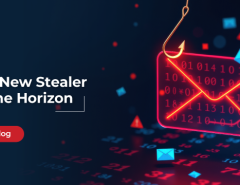When it comes to enlisting the most unrecognizable forms of cyber-attacks, Distributed Denial of Service (DDoS) features on top of the pecking order. While DDoS attacks started off as simple and volumetric threats for creating disruptions, they have amplified considerably into complexities of catastrophic proportions. In addition to that, the underlining motives behind the DDoS attacks are fast blurring out and automation is playing a major role in assisting the attackers. Majority of DDoS attacks are initiated for financial perks with the malicious parties switching vectors frequently for staying one step ahead of the IT security strategies. Lastly, it needs to be understood that the duration, frequency and, size of DDoS attacks can turn out to be important metrics as even a small period of latency or downtime can massively impact the organization and the remittance of services.
With several impending factors on-board, it is important that companies, in association with reliable security service providers, opt for functional security measures for staying protected against the DDoS attacks.
Understanding the Nature of DDoS Attacks
A DDoS attack denies legitimate access to an online service by attacking the existing network or infrastructure. Be it breaking into a SaaS application for gaining access or targeting the VoIP infrastructure, a DDoS attack cripples accessibility; thereby hampering productivity and remittance of essential services. A lot of computer prowess and associated resources are usually deployed by the attackers who push forth massive quantities of traffic for logging legitimate users out of the systems. Experienced attackers usually camouflage attacks as web traffic, flooding the servers and organizational networks with fake requests. These can either be Layer 3 and Layer 4 attacks via illegitimate traffic and requests or the more complicated, Layer 7 attacks, stimulating the individual accessing the concerned service.
Read more: Essential policies to rescue your organization from advanced cyber threats
Staying Protected against DDoS Attacks
As mentioned, DDoS attacks are often initiated for financial gains which later evolve into targeted ransomware threats. However, organizations can follow a step-pronged approach for preventing attacks and staying ahead of the malicious parties.
- Documenting a Resiliency Plan
Organizations must document their technical competencies, business outlines and even key decisions while drafting a resiliency plan. While staying protected and preventing attacks should be the priorities, organizations must have an incident response strategy in place for dealing with the consequences of a DDoS attack.
- Identifying Attack Activities
Companies often make the mistake of misunderstanding the nature of threats by only considering high-volume and large DDoS attacks as potential vulnerabilities. However, low-volume threats should also be accounted for as these issues can put undue stress on the networks and expose the potential weaknesses. One aspect of identifying DDoS attacks happens to be the patterns associated with network traffic, which, if studied carefully, can help companies determine both small and large attacks.
- Opting for On-Premise Arsenal
Existing firewalls cannot be relied upon completely to defend organizations against DDoS attacks. Instead, organizations must put enterprise equipment and on-premise essentials where the equipment must be clubbed with skilled professionals and engineers. Apart from that, the patches associated with on-premise essentials must be updated on a regular basis. Last, but not the least, these appliances aren’t usually powerful enough when it comes to handling volumetric attacks. In such cases, it is important to revisit the first strategy and design an incident response plan for combating the threats.
- Selecting a Functional Internet Service Provider
Needless to say, a resourceful ISP can pay rich dividends to an organization by protecting the existing networks against DDoS attacks. ISPs can help with DDoS mitigation by handling volumetric attacks, unlike the on-premise appliances. That said, the concerned ISP must not lack competency and should have a cloud-specific interface for securing web applications and SaaS applications. Lastly, companies must look to pair two ISPs for achieving better results and maximizing equipment uptime.
How Seqrite Defends Organizations against DDoS Attacks?
Seqrite’s Endpoint Security comes forth with a DDoS mitigation plan that deploys bandwidth and excellent mitigation capacities across multiple network points. The existing DDoS prevention plan works in cohesion with the concerned Internet Service Provider, offering real-time analytics for keeping illegitimate traffic surges off the radar. Seqrite scrubs off the network traffic for its clients and allows to deploy web filtering techniques for blocking malicious entries. In addition to that, Seqrite brings a lot of expertise to the table followed by a lot of essential bandwidth that’s capable of handling volumetric attacks. Lastly, Seqrite comes equipped with excellent DDoS prevention hardware followed by cloud-specific services and proprietary technologies for keeping similar threats and vulnerabilities at bay.
As an IT security partner for your business, Seqrite provides comprehensive endpoint security from advanced cyber threats. To know more, visit our website or




